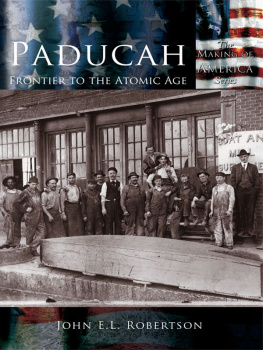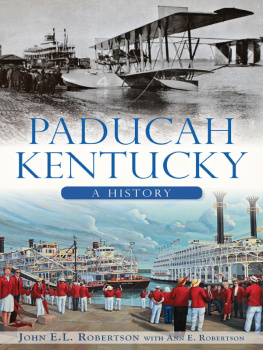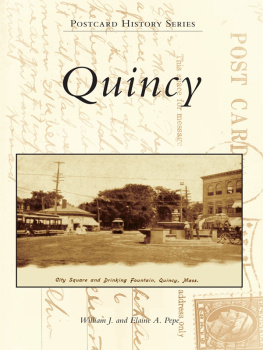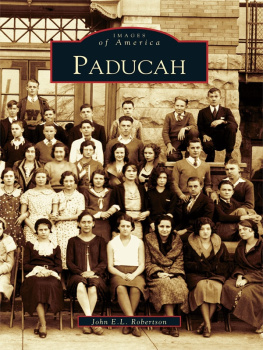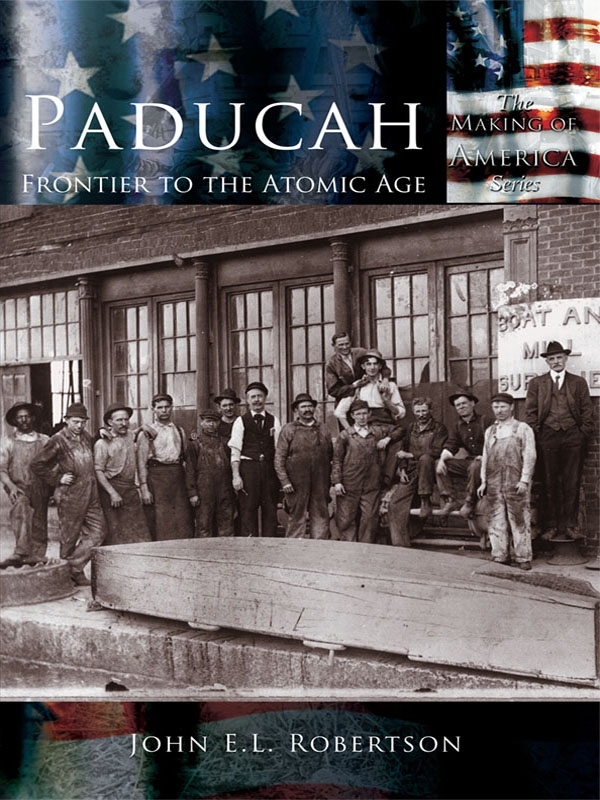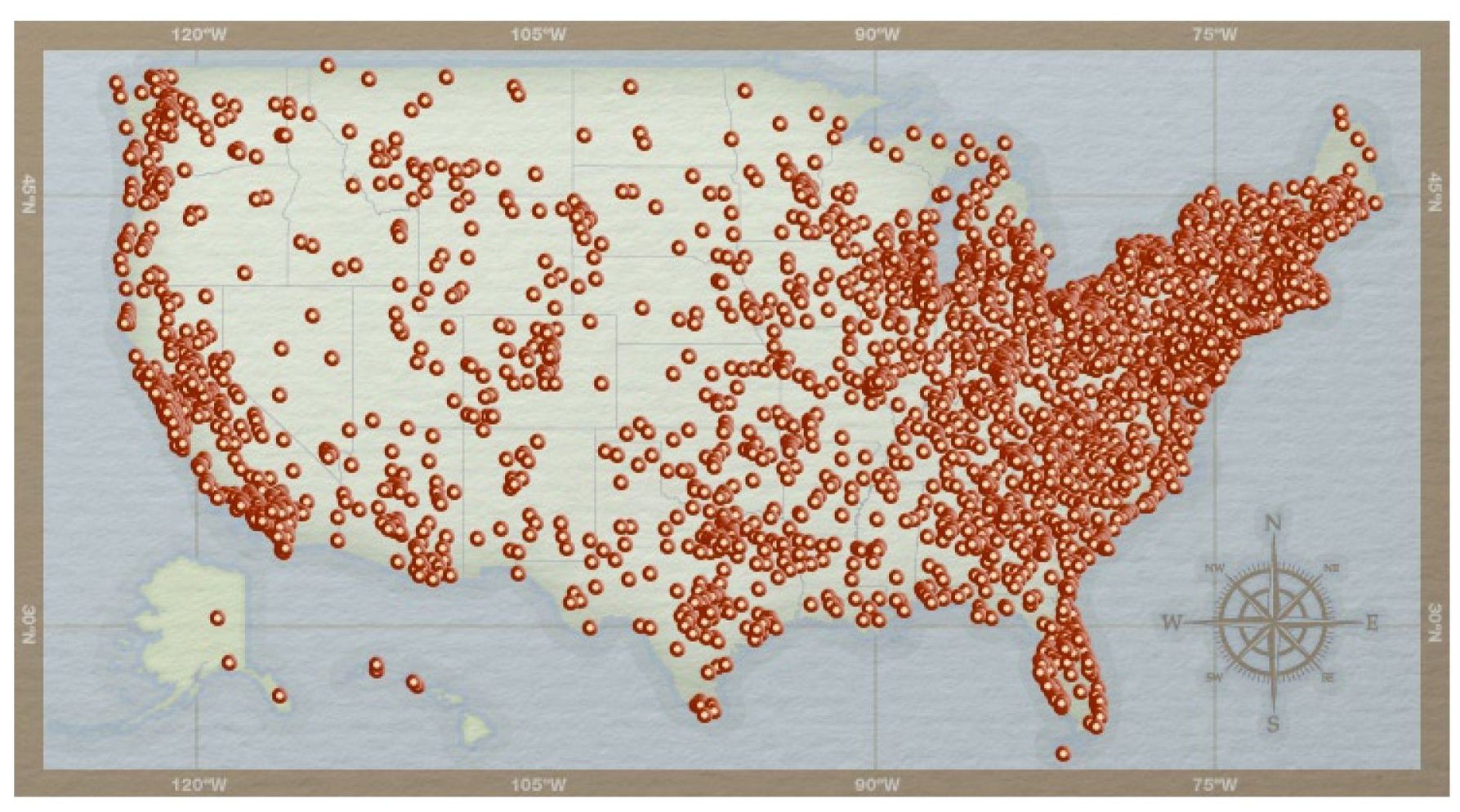Jesse H. Gardner, 18571859
Ed G. Scott, 19321936
BIBLIOGRAPHY
American Annual Cyclopaedia and Register of Important Facts, 1861 . New York: D. Appleton and Co., 1865.
Battle, J.H., W.H. Perrin, and G.C. Kniffin. Kentucky: A History of the State . Louisville, KY: F.A. Battey Publishing Co., 1885.
Black, William R. III. A History of Race Relations in the Paducah Schools . Princeton, NJ: unpublished thesis, 1996.
Blythe, Janett Marie. A Pictorial History of a School . Paducah: Turner Publishing, 2000.
Clark, Thomas D. A History of Kentucky . Lexington, KY: The John Bradford Press, 1960.
Collins, Richard H. History of Kentucky . Frankfort: Kentucky Historical Society, 1966.
Corliss, Carlton J. Main Line of Mid-America . New York: Creative Gae Press, 1950.
Coulter, Ellis Merton. The Civil War and Reconstruction in Kentucky . Chapel Hill: The University of North Carolina Press, 1926.
Cunningham, Bill. On Bended Knee . Nashville: McClanahan Press, 1983.
Deupree, J.G. The Noxubee Squadron of the First Mississippi Cavalry, C.S.A., 18611865 . Jackson: Mississippi Historical Society, 1918.
Fairhurst, Richard E. The Fairhurst Essays: A Public Look at a Private Memoir . Gerard, MO: The Patrice Press, 1980.
Franklin, John Hope. From Slavery to Freedom: A History of Negro Americans . New York: Alfred A. Knopf, 1974.
Grant, Ulysses S. Personal Memoirs . New York: Charles L. Webster and Co., 1885.
Jewell, Virginia. Lick Skillet and Other Tales of Hickman County . Union City, TN: Lanzer Printing Co., 1986.
Kaufman, Max. Tales from Specks of Dust: Poems of the Atomic Age . New York : The William-Frederick Press, 1947.
Langstaff, George Quigley, ed. Quintus Quincy Quigley, The Life and Times of Quintus Quincy Quigley, 18281910: His Personal Journal . Nashville: Tallent Communications Group, 1999.
Miller, John G. The Black Patch War . Chapel Hill: The University of North Carolina Press, 1936.
Mofield, William Ray. The Atomic Age Comes to Paducah . Columbia University: unpublished thesis, 1957.
Robertson, John E.L. Paducah, 18301980, a Sesquicentennial History . Paducah: Image Graphics, 1980.
. Paducah: A Pictorial History . St. Louis: G. Bradley Publishing, 1988.
. The History of Citizens Bank: 100th Anniversary . Paducah: Image Graphics, 1988.
Robertson, John E.L., and Margaret Robertson. Fountain Avenue United Methodist Church: A Centennial History . Paducah: Image Graphics, 1992.
Sandburg, Carl. Abraham Lincoln: The Prairie Years and the War Years . Pleasantville, NY: Readers Digest, 1970.
Shannon, Jasper B., and Ruth McQuown. Presidential Politics in Kentucky, 18241948 . Lexington: University of Kentucky Press, 1950.
Stover, John F. History of the Illinois Central Railroad . New York: McMillan Publishing Co.
Thompson, H.E. Paducah Historically . Paducah: Young Printing, 1910.
War of the Rebellion: Official Records of the Union and Confederate Armies . Washington, D.C.: Government Printing Office, 1871.
Williams, ?. Paducah Directory, City Guide and Business Mirror . Paducah: Bryan and Clements, 1859.
Extensive use of newspapers back to the Civil War was possible due to the collections of the McCracken County Public Library, the Filson Club, Murray State University, the University of Kentucky, and the University of Louisville Libraries.
Tape-recorded interviews with various mayors and members of the city commission provided the basis for the section on recent politics, and interviews with survivors of the 1937 flood provided the basis for that section.
Public sources include census documents, the Acts of Kentucky, Kentucky Senate and House Journals , and city and county order books.
The Meriwether Lewis Clark papers in the Clark Family Collection of the Missouri Historical Society in St. Louis cleared up the issue of the naming of Paducah. The George Goodman Papers at the University of Kentucky deal with the WPA in Kentucky, the Harvey papers on integration are from the files of Reverend Harvey in Paducah, and the papers of Andrew Jackson in the Library of Congress gave insight to the treaty ceding the Purchase from the Chickasaw to the United States.
Find more books like this at
www.imagesofamerica.com
Search for your hometown history, your old
stomping grounds, and even your favorite sports team.
1. BEGINNINGS
The site that is now Paducah, Kentucky, came to the attention of George Rogers Clark in 1778 while he was en route to capture the former French towns in the Illinois country along the lower Ohio River during the American Revolution. With few men and scant supplies, Clark left the Redstone settlement near present Pittsburgh in early May with about 150 men bound for the Falls of the Ohio (now Louisville). In his secret orders to Clark, Virginia Governor Patrick Henry extended him the authority to seize any British forts he deemed advisable. Low water forced Clark to stop at the falls, where he drilled his troops. While on an island there, Clark planted a corn crop to cover a retreat if that should be needed later in the summer.
Proceeding down the river, the party camped on the north (Illinois) side just above the mouth of the Tennessee. While there, Clark noted that the land on the opposite shore at the mouth of the Tennessee gave promise as a city site; however, other affairs were at hand. He proceeded west, stopped short of the mouth of the Ohio to fool the French and Indians of the area who were watching for him, and marched overland from Massac Creek to Kaskaskia, where the fort and town were taken without a casualty. Thus, Clark began his conquest of more territory from the British than any other single person during the Revolution. His exploits gave Clark and the state of Virginia, his sponsor, claim to the entire Northwest Territory, which encompassed all lands east of the Mississippi, north of the Ohio, and south of the Great Lakes eastward to the Appalachian Mountains.

